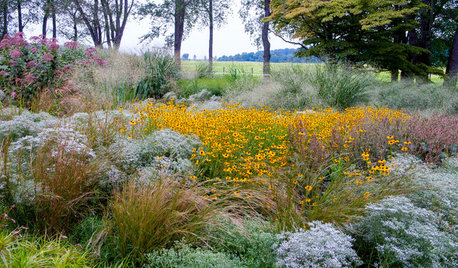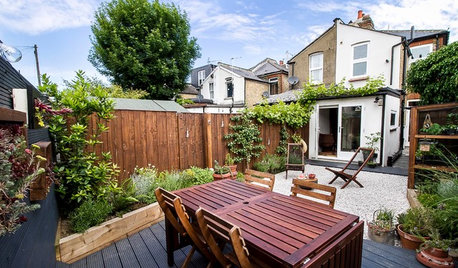Hugelkulture and distance between tomato plants
helenh
11 years ago
Related Stories

GARDENING GUIDESGreat Garden Combo: 3 Wonderful Plants for a Deer-Resistant Screen
Protect your privacy and keep deer at bay with a planting trio that turns a problem garden area into a highlight
Full Story
LIFEWorld of Design: See How 7 Families Live in Multigenerational Homes
What happens when three or more generations live within shouting distance of one another? More hugging than shouting, actually
Full Story
GARDENING GUIDES10 Easy Edibles for First-Time Gardeners
Focus on these beginner-friendly vegetables, herbs, beans and salad greens to start a home farm with little fuss
Full Story
GARDENING GUIDESGet on a Composting Kick (Hello, Free Fertilizer!)
Quit shelling out for pricey substitutes that aren’t even as good. Here’s how to give your soil the best while lightening your trash load
Full Story
GARDENING GUIDESWhat Are Your Spring Gardening Plans?
Tearing out the lawn? Planting edibles? Starting from scratch? Tell us what you plan to change in your garden this year
Full Story
GARDENING GUIDESThe Surprising Ingredients Every Good Garden Should Have
See what to do — and not do — for lasting rewards in your landscape
Full Story
GARDENING GUIDES15 Native Flowers That Feed Native Bees
These perennials offer superfood to hundreds of bees and are gorgeous in their own right
Full Story
GARDENING GUIDESHow to Plan Your Edible Garden
Get organized before you plant to ensure that your fruits and vegetables have a chance to thrive
Full Story
GARDENING GUIDESPacific Northwest Gardener's October Checklist
Break up tidying time by planting spring bulbs, tending to veggies and giving leaves a rich new life
Full Story0

GARDENING GUIDESEssential Watering Tips for Your Edible Garden
To give your edible plants just what they need, check out these guidelines for how, when and how much to water
Full StorySponsored
More Discussions






Okiedawn OK Zone 7
helenhOriginal Author
Related Professionals
Wrentham Landscape Architects & Landscape Designers · Surprise Landscape Architects & Landscape Designers · Waunakee Landscape Architects & Landscape Designers · Clermont Landscape Contractors · Bellefontaine Neighbors Landscape Contractors · Brookfield Landscape Contractors · Cary Landscape Contractors · Hayden Landscape Contractors · Lake Zurich Landscape Contractors · Milford Landscape Contractors · Paramount Landscape Contractors · Lauderdale Lakes Landscape Contractors · Austin Decks, Patios & Outdoor Enclosures · Watauga Decks, Patios & Outdoor Enclosures · Windsor Decks, Patios & Outdoor Enclosuresslowpoke_gardener
helenhOriginal Author